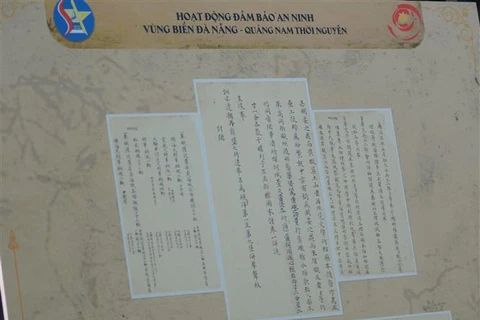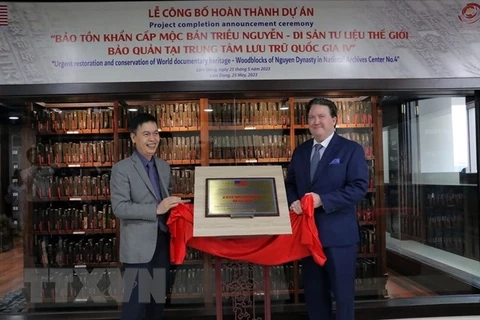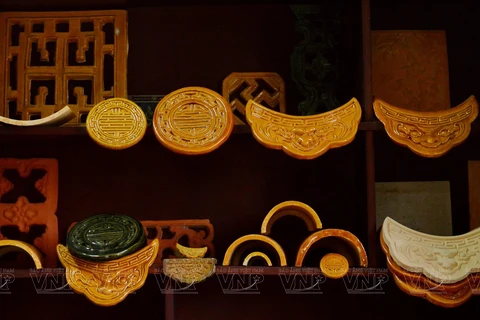 Artifact: Nguyen Dynasty’s royal treasures, including a golden book on the top left corner, at the Vietnam National Museum of History (Photo: VNA)
Artifact: Nguyen Dynasty’s royal treasures, including a golden book on the top left corner, at the Vietnam National Museum of History (Photo: VNA) Hanoi (VNA) - One of the rare and valuable sources of historical records in Vietnamese literature is the collection of ‘kim sach’ (golden books) from the Nguyen Dynasty, which document the court's affairs and, to some extent, reflect the historical changes of the last feudal dynasty in Vietnamese history.
The Nguyen Dynasty lasted for nearly 150 years (1802-1945) with 13 emperors, who commissioned a vast number of the books made of gold.
According to the regulations of the dynasty, items of sacred and precious significance were to be made of gold and gemstones. Golden books, along with ‘an vang’ (golden seals), were treasures representing the authority of the dynasty and cultural symbols of the era.
The golden books of the Nguyen Dynasty are in vertical rectangular format, with dragon or phoenix motifs on the front and back covers, secured with four round clasps. They were used to record important court affairs, such as events like the enthronement of emperors, the establishment of crown princes and empresses, and the conferment of titles and honours upon royal family members and officials.
These books were personally composed by emperors or high-ranking mandarins. Among Nguyen emperors, Gia Long created the largest number of golden books, with 36.
According to many researchers, in 1802, after establishing the Nguyen Dynasty, Emperor Gia Long began casting the first golden book in 1806 to honour his father. Measuring 24.5cm x 13.5cm, it consists of two thick covers and four thinner pages whose content praises the illustrious achievements and glorious career of the emperor. The book, bound with four golden clasps, weighs 37 taels and 4 candareens (1.4kg) of gold. The raised cover features a design of a five-clawed dragon amidst clouds. The inner pages are divided into five columns of writing.
Within the Nguyen Dynasty's collection of golden books, the book titled ‘Thanh che minh menh kim sach’ on regulations regarding the naming of the royal family issued by Emperor Minh Mang in 1823 is considered the most special and important treasure.
This meticulously crafted item, weighing 4.2kg and made of 10K gold, is still relatively well-preserved and currently kept at the Vietnam National Museum of History in Hanoi.
According to experts, the unique treasures also contain valuable information about the cultural and artistic zenith achieved by the imperial court's artisans and craftsmen. Over the 143-year course of the Nguyen Dynasty, with nine lords and 13 emperors, numerous queens, crown princes, princes, and princesses, a substantial number of golden books were undoubtedly produced. However, due to historical vicissitudes, most of them have been lost.
In August 1945, when King Bao Dai abdicated, he handed over all treasures of the royal court to the interim government. This collection comprised around 3,000 items, which were later moved to Hanoi.
After more than half a century of being stored away, in 2007, these treasures, including 94 precious golden books, were transferred to the Vietnam National Museum of History.
On March 31, 2016, the museum organised an exhibition on royal treasures - golden books of the Nguyen Dynasty (1802-1945) showcasing 22 of the 94 books.
This was the first time the public had the opportunity to see and learn about these unique artifacts, along with their historical, cultural, and artistic values./.























